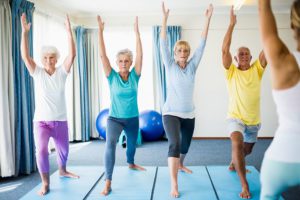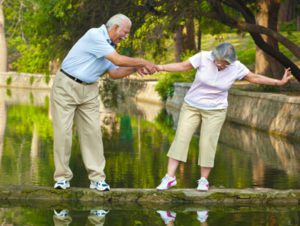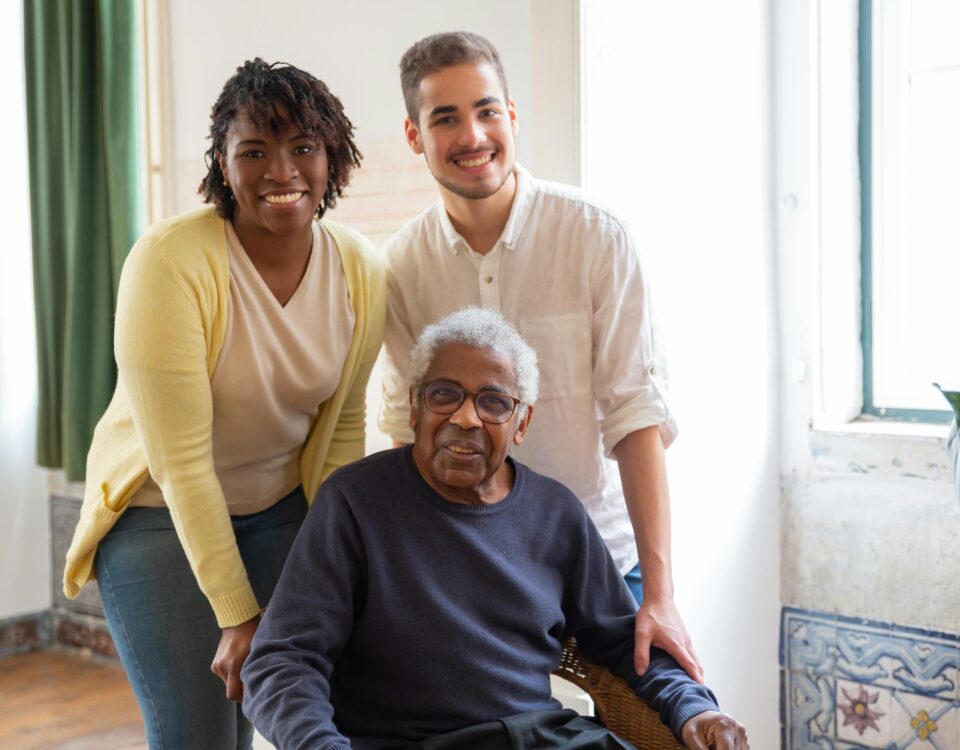
How Can You Help Your Parent Prevent Concussions?
September 4, 2018
Chronic Dizziness Can be a Health Warning in Seniors
September 10, 2018You Don’t Have to Fall
Ordinarily, we take our balance for granted, but it is an important and vital part of our daily life. As many as 28% to 45% of elders fall each year due to elderly-balance-decline as we age. Though our balance will decline as we age, balance activities, elderly balance exercises, and elderly balance training can limit the loss or actually improve our performance.
Exercise Tips for Seniors to Maintain Strength, Flexibility, and Balance
Strength training is essential for older people. They need to maintain their muscle mass and avoid bone loss while improving their functional ability and balance. Strength training helps maintain muscle mass, bone density, and strength and enhances the ability to function in daily life, and even improves balance.
The information provided below is strictly for awareness purposes. It is not intended to be a medical advice, either expressed or implied.
1) Cardio Endurance – Get your heart pumping to help lessen fatigue and shortness of breath by walking, stair climbing, swimming, hiking, or dancing.
2) Strength and Power Training – Build up muscle with repetitive motion using weights – or any item with weight including soup cans. External resistance from elastic bands can help. Strength training helps prevent loss of bone mass and improves balance.
3) Balance – Improve your posture and reduce the risk of falling when strengthening your core. Yoga and Tai Chi are recommended. Exercise is the key to staying strong and energetic – and can be fun especially when participating with friends within your community. Try a 10-minute workout twice a day and build up to a tempo that keeps you challenged but doesn’t leave you completely burned out or fatigued. Also, make sure you talk with your doctor before beginning any new exercise plan.

5) Walking – The only equipment it requires are your two feet enveloped by comfortable shoes. Walking is the perfect way to ease into a more regular exercise routine.
6) Water Aerobics – Water reduces the stress and strain on the body, so see if a local YMCA or YWCA has classes especially for older adults. A local senior center also may have some suggestions as to where to find low-to-no-cost classes for those on a fixed income.
7) Fitness Classes – Check with your community liaison to find out if and when classes are offered.
A downloadable PDF version of the article is available here.
Sources: https://eldergym.com/elderly-balance, https://www.capitalsenior.com/blogexercise-tips-seniors-maintain-strength-flexibility-balance/, https://www.strengthandconditioningresearch.com/perspectives/strength-training-elderly/
Disclaimer: 1Heart Caregiver Services Blog may contain articles about health care and medical related topics. However, no warranty is made that any of the articles are accurate. There is absolutely no assurance that any statement contained or cited in any or our articles touching on health care or medical related matters is correct, true, up-to-date or, precise, If any of the statements we mentioned about healthcare or medicine is accurate, it may or may not apply to you or your symptoms.
The health care or medical information provided on 1Heart Caregiver Services is, at best, of a general nature and cannot replace the advise of a health care/medical professional. 1Heart Caregiver Services will not take responsibility for the results or consequences in attempting to use or adopt any information presented in its blog articles.


